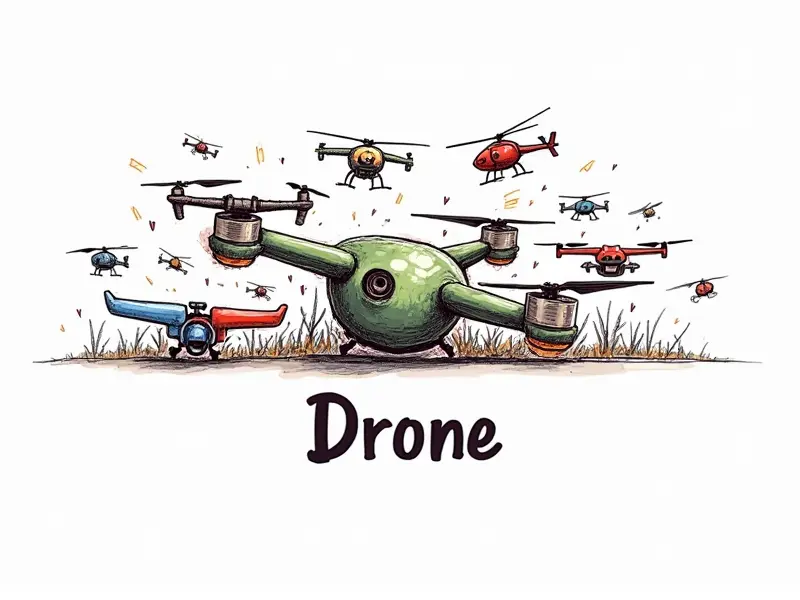DIY drone autopilot kits

DIY Drone Autopilot Kits: A Comprehensive Guide
Building a drone autopilot system from scratch can be an incredibly rewarding project for hobbyists and enthusiasts alike. This guide will walk you through the process of creating your own DIY drone autopilot kit, covering everything from hardware assembly to software development.
Build Your Own Drone Autopilot System
The journey of building a drone autopilot system starts with understanding its components and functionalities. An autopilot system typically includes an onboard computer, sensors for navigation (GPS, IMU), communication modules, and actuators for control.
- Onboard Computer: A microcontroller or single-board computer like Arduino, Raspberry Pi, or Pixhawk.
- Sensors: GPS, Inertial Measurement Unit (IMU), barometer, and magnetometer.
- Communication Modules: Serial communication for telemetry data transfer, Wi-Fi or Bluetooth for remote control.
- Actuators: ESCs (Electronic Speed Controllers) connected to motors and servos.
DIY Drone Autopilot Kit Guide
This section provides a detailed guide on assembling your DIY drone autopilot kit. Start by selecting the right hardware components based on your project requirements:
- Microcontroller or SBC: Choose between Arduino, Raspberry Pi, or more advanced options like Pixhawk.
- Sensors and Modules: Purchase sensors for navigation and communication modules for data transfer.
- Mechanical Components: Frame, motors, ESCs, propellers, and battery pack.
Create Custom Drone Autopilot Hardware
To create custom hardware for your drone autopilot system, you need to design a robust framework that supports all necessary functionalities. Consider the following steps:
- Designing PCBs: Create printed circuit boards (PCBs) for mounting and connecting components.
- 3D Printing Enclosures: Design enclosures using CAD software to protect internal parts.
- Mechanical Integration: Ensure proper mechanical integration of all hardware components.
Assembling the Best DIY Drone Autopilot
When assembling your DIY drone autopilot, focus on quality and precision. Follow these steps:
- Mounting Components: Securely mount sensors, microcontroller, and communication modules.
- Connecting Wires: Connect wires carefully to avoid short circuits or loose connections.
- Testing Functionality: Test each component individually before integrating them into the system.
Step-by-Step DIY Drone Autopilot Setup
To set up your DIY drone autopilot, follow these steps:
- Install Firmware: Upload firmware to the microcontroller or SBC.
- Configure Parameters: Set parameters for flight modes and navigation settings.
- Calibrate Sensors: Calibrate GPS, IMU, and other sensors accurately.
Beginner's Guide to DIY Drone Autopilots
If you're new to building drone autopilot systems, start with simpler projects before moving on to more complex ones. Here are some tips for beginners:
- Start Small: Begin with basic components and gradually add complexity.
- Leverage Online Resources: Use forums, tutorials, and documentation from reputable sources.
- Practice Safety: Always prioritize safety when working with electrical components.
The Ultimate DIY Drone Autopilot Project
This section outlines an advanced project for those looking to build a highly sophisticated drone autopilot system. Consider the following aspects:
- Advanced Navigation: Implement complex navigation algorithms like SLAM (Simultaneous Localization and Mapping).
- Mission Planning Software: Develop software for mission planning and execution.
- Integration with External Systems: Integrate your autopilot system with external databases or cloud services.
Craft Your Own Drone Autopilot Software
Creating custom drone autopilot software involves programming the microcontroller to control flight dynamics and navigation. Here are some key aspects:
- Flight Control Algorithms: Implement PID (Proportional-Integral-Derivative) controllers for stability.
- Data Processing: Process sensor data in real-time for accurate navigation.
- User Interface: Develop a user-friendly interface for easy configuration and monitoring.
Creating an Autonomous Drone from Scratch
To create an autonomous drone, you need to integrate hardware and software components seamlessly. Follow these steps:
- Select Components: Choose the right hardware based on your requirements.
- Develop Firmware: Write firmware for controlling flight dynamics and navigation.
- Test Thoroughly: Conduct extensive testing to ensure reliability and safety.
Build a Smart Drone with DIY Autopilot
A smart drone integrates advanced features like machine learning, AI, and IoT. Here’s how you can build one:
- Machine Learning: Implement ML algorithms for object detection and avoidance.
- IoT Connectivity: Enable connectivity with external devices or cloud services.
- User Experience: Enhance user experience through intuitive interfaces and features.
How to Make Your Own Drone Autopilot
Making your own drone autopilot requires a combination of technical skills, creativity, and dedication. Follow these final tips:
- Stay Updated: Keep up with the latest advancements in technology.
- Collaborate: Work with other enthusiasts or join communities for support.
- Innovate: Experiment and innovate to create unique solutions.
Building a DIY drone autopilot is an exciting journey that combines technology, creativity, and innovation. With the right approach and dedication, you can develop sophisticated systems capable of performing complex tasks autonomously.

